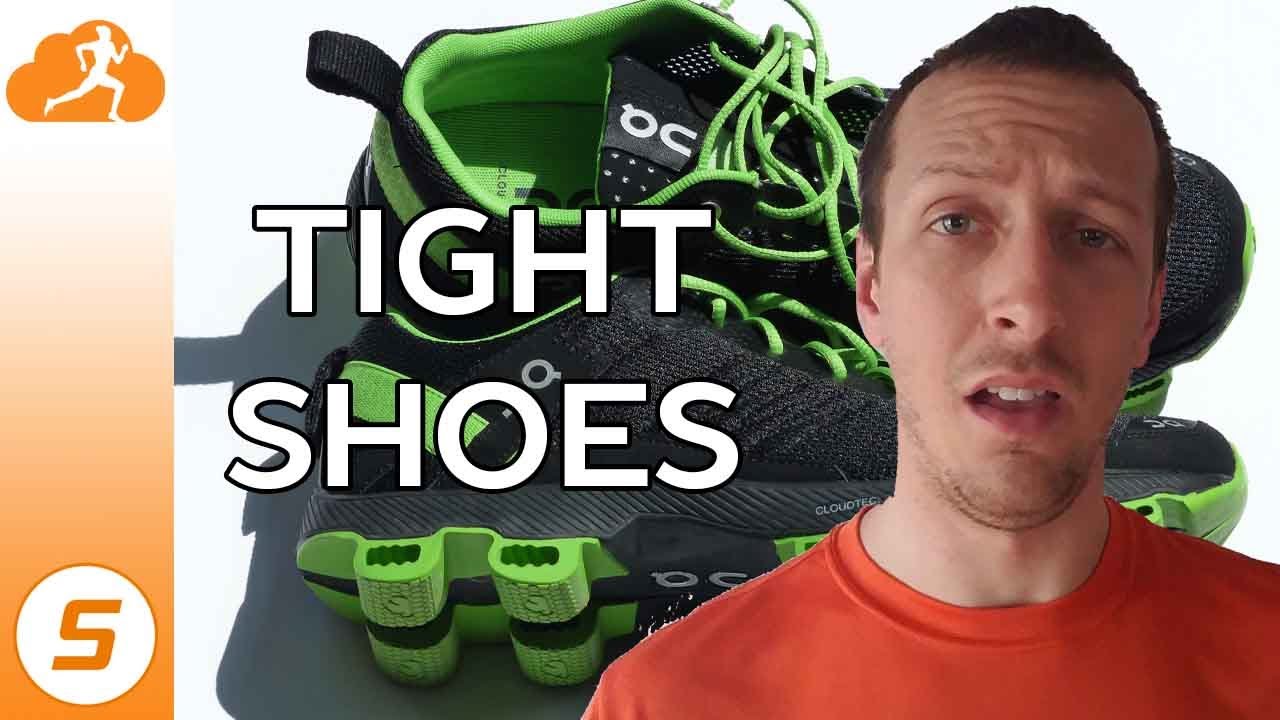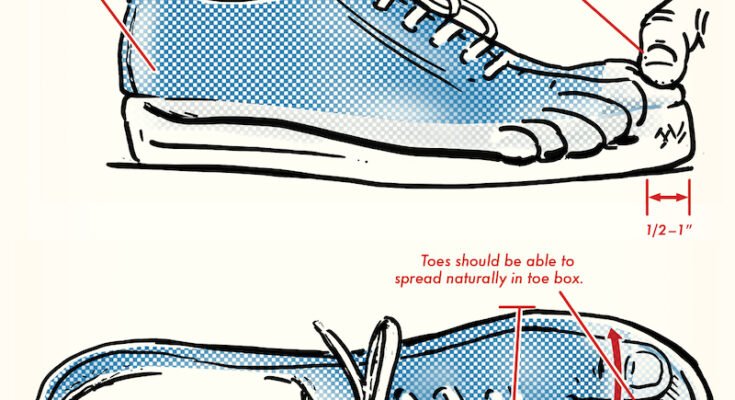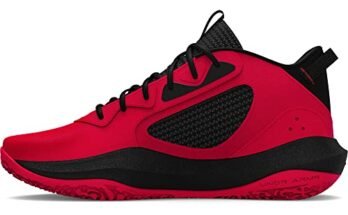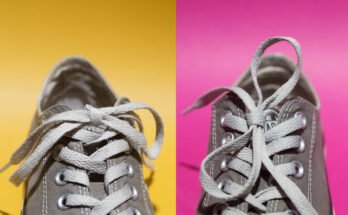Shoes should fit snugly but not too tight, with about a half-inch of space at the front for comfort and movement. Finding the right balance between tight and loose shoes is essential for both comfort and foot health.
Ill-fitting shoes can cause discomfort, blisters, and even long-term foot problems, while overly loose shoes can lead to instability and potential injury. It’s important to pay attention to the fit of your shoes and make adjustments accordingly to ensure optimal comfort and support.
By understanding the importance of proper shoe fit, you can make informed decisions when choosing and wearing footwear, promoting both comfort and foot health.

Credit: www.youtube.com
Importance Of Finding The Right Fit
Ensuring your shoes fit properly is crucial for the health of your feet. Ill-fitting shoes can lead to a host of problems, from blisters and calluses to more serious issues like bunions and even back pain. Finding the right fit is not just about comfort; it’s about maintaining the well-being of your feet in the long run.
Impact Of Poor Fitting Shoes On Feet
Poorly fitting shoes can cause discomfort, pain, and long-term damage to your feet. They can result in issues such as bunions, corns, and ingrown toenails, affecting your mobility and overall foot health.
Benefits Of Wearing Well-fitting Shoes
Wearing shoes that fit properly can prevent foot problems and promote good posture and balance. Well-fitting shoes provide adequate support and cushioning, reducing the risk of injuries and ensuring your feet stay healthy and happy.
Determining Your Foot Size
Measuring Your Foot
Start by measuring the length and width of your foot. Place your heel against a wall and mark the farthest point of your foot. Measure the distance between the two points to determine the length. For the width, measure the widest part of your foot. Use these measurements to find the appropriate shoe size.
Understanding Shoe Sizing
Shoe sizes vary by brand and style, so understanding the sizing chart is crucial. Different countries use different sizing systems, so ensure you’re familiar with the appropriate conversion. Always refer to the specific brand’s size guide to find the perfect fit for your foot.
Differentiating Between Widths
Shoes come in various widths to accommodate different foot shapes. Narrow, standard, wide, and extra wide are the most common widths. Be sure to know your foot’s width to ensure a comfortable fit. Consult the shoe’s width chart to find the best match for your foot.
Tight Shoes
Shoes are an essential part of our wardrobe. They not only protect our feet but also add style to our outfit. However, when it comes to choosing the right size of shoes, it’s crucial to consider the fit. Many people wonder whether shoes should be tight or loose. In this blog post, we’ll talk about tight shoes and whether they are appropriate or not.
Consequences Of Wearing Tight Shoes
Wearing tight shoes for an extended period can cause various foot problems. Here are some consequences of wearing tight shoes:
| Consequences | Explanation |
|---|---|
| Blisters | Tight shoes can cause friction and result in painful blisters. |
| Corns | Continuous pressure on the toes can lead to corns, which are hard and thickened skin areas. |
| Ingrown toenails | Tight shoes can cause toenails to grow into the skin, leading to painful ingrown toenails. |
| Bunions | Tight shoes can cause deformities in the feet, leading to bunions. |
When Tight Shoes Are Appropriate
While tight shoes are generally not recommended, there are some situations where they may be appropriate. For example, when playing sports, tight shoes can provide better support and stability. However, it’s crucial to ensure that the shoes are not too tight and still allow room for movement.
Stretching Tight Shoes
If you have a pair of shoes that are too tight, you may be able to stretch them. Here are some methods for stretching tight shoes:
- Use a shoe stretcher – A shoe stretcher can stretch the width and length of the shoe.
- Freeze the shoes – Fill a plastic bag with water, place it inside the shoe, and freeze it. The ice will expand and stretch the shoe.
- Use a hairdryer – Heat the tight areas of the shoe with a hairdryer, then wear the shoes while they are still warm to stretch them.
Overall, it’s crucial to ensure that shoes fit well and are not too tight. While there may be some situations where tight shoes are appropriate, it’s essential to be aware of the potential consequences and take steps to prevent foot problems.

Credit: solpri.com
Loose Shoes
When it comes to finding the perfect pair of shoes, the fit is everything. While some may prefer a snug fit, others lean towards a looser feel. Understanding the benefits and drawbacks of loose shoes can help you make an informed decision about your footwear.
Drawbacks Of Wearing Loose Shoes
Wearing loose shoes can lead to a range of issues, including:
- Increased risk of blisters and calluses due to excessive friction
- Reduced stability and support, potentially leading to foot and ankle injuries
- Difficulty in maintaining proper gait and balance
When Loose Shoes Are Suitable
Loose shoes may be suitable in certain scenarios, such as:
- During long flights or car rides to allow for natural swelling of the feet
- For individuals with certain foot conditions, such as bunions or hammertoes
- When engaging in low-impact activities like yoga or light walking
Using Insoles To Adjust Fit
For those who prefer the style or design of a slightly looser shoe, using insoles can help customize the fit. Insoles are available in various thicknesses and materials, allowing for a tailored fit while maintaining the integrity of the shoe’s design.
Factors To Consider When Trying On Shoes
When trying on shoes, it’s crucial to find the right balance between tight and loose. The fit should be snug but not constricting, ensuring comfort and support without any rubbing or slipping. Consider the specific style and material of the shoe to determine the ideal fit for your feet.
The right fit for shoes is crucial for comfort and foot health. When trying on shoes, consider these factors to ensure a proper fit.Time Of Day
Choose the afternoon for shoe shopping. Feet tend to swell as the day goes on, ensuring a more accurate fit.Socks Or No Socks
Wear the type of socks you usually wear with the shoes. It impacts how the shoes fit on your feet.Walking And Testing Comfort
Walk around the store to test comfort. Ensure there is enough room for your toes to move freely.Different Shoe Types And Their Fit
When it comes to shoes, finding the perfect fit is crucial for comfort and avoiding foot problems. Different types of shoes require different fits, and understanding these variations is essential for ensuring your footwear is both comfortable and functional.
Athletic Shoes
Athletic shoes should have a snug fit to provide stability and support during physical activities. The heel should not slip, and there should be enough room in the toe box to wiggle your toes comfortably.
Dress Shoes
Dress shoes should fit snugly but not too tight. There should be a little space at the heel to allow some movement, but the shoe should not slip off while walking. The toes should have enough room to move without feeling cramped.
Boots
Boots should fit snugly around the ankle and instep to provide support, but there should be enough room in the toe area to prevent discomfort. A little slippage at the heel is acceptable, but excessive movement can lead to blisters.
Sandals
Sandals should have a comfortable and secure fit. The straps should not dig into the skin, and there should be enough room for the toes to move freely. The heel should rest comfortably in the footbed without excessive slippage.
Tips For Ensuring The Perfect Fit
When it comes to shoes, the perfect fit is crucial for comfort and foot health. Follow these simple tips to ensure your shoes fit just right.
Shopping For Shoes Later In The Day
Shop for shoes later in the day when your feet are slightly swollen for a more accurate fit.
Trying On Both Shoes
Always try on both shoes to ensure consistency in fit and comfort for both feet.
Walking Around The Store
Walk around the store in the shoes to ensure they don’t pinch or rub in any areas.
Getting A Professional Fitting
Visit a shoe store for a professional fitting to determine the right size and style for your feet.
Caring For Your Shoes
Proper care and maintenance of your shoes is essential to extend their lifespan and keep them looking great. Below are key tips on how to care for your shoes effectively.
Cleaning And Maintenance
Regularly clean your shoes with a soft brush to remove dirt and debris.
Condition leather shoes to prevent cracks and maintain their shine.
Avoid using harsh chemicals that can damage the material of your shoes.
Replacing Old Shoes
Check your shoes regularly for signs of wear and tear such as worn out soles or loose stitching.
Replace shoes that show significant damage to avoid discomfort or injury.
Invest in quality shoes to ensure durability and longevity.
Storing Shoes Properly
Store your shoes in a cool, dry place away from direct sunlight to prevent fading.
Use shoe trees to help maintain the shape of your shoes when not in use.
Rotate your shoes regularly to prevent excessive wear on a single pair.

Credit: www.youtube.com
Frequently Asked Questions
Is It Better For A Shoe To Be Tight Or Loose?
It’s best for shoes to fit snugly but not too tight. Tight shoes can cause discomfort and foot problems, while loose shoes can lead to blisters and instability. The right fit provides comfort and support for your feet.
Is It Okay To Wear Tight Shoes?
Wearing tight shoes can cause discomfort, pain, and foot problems like bunions and blisters. It’s best to choose shoes that fit well and provide proper support for overall foot health.
Are Shoes Supposed To Be Tight When New?
New shoes should fit snugly, but not uncomfortably tight. The initial snugness allows for stretching over time.
Is It Better To Get Shoes A Size Bigger?
Getting shoes a size bigger can provide extra comfort and prevent foot pain. It allows room for natural foot swelling and movement. However, excessively large shoes may cause blisters and instability. It’s best to only go up half a size for a better fit.
Conclusion
To ensure comfort and foot health, finding the right shoe fit is crucial. Whether tight or loose, balance is key. Listen to your body’s cues and adjust accordingly. Remember, improperly fitting shoes can lead to discomfort and even injury. Prioritize both comfort and proper fit for happy feet.



